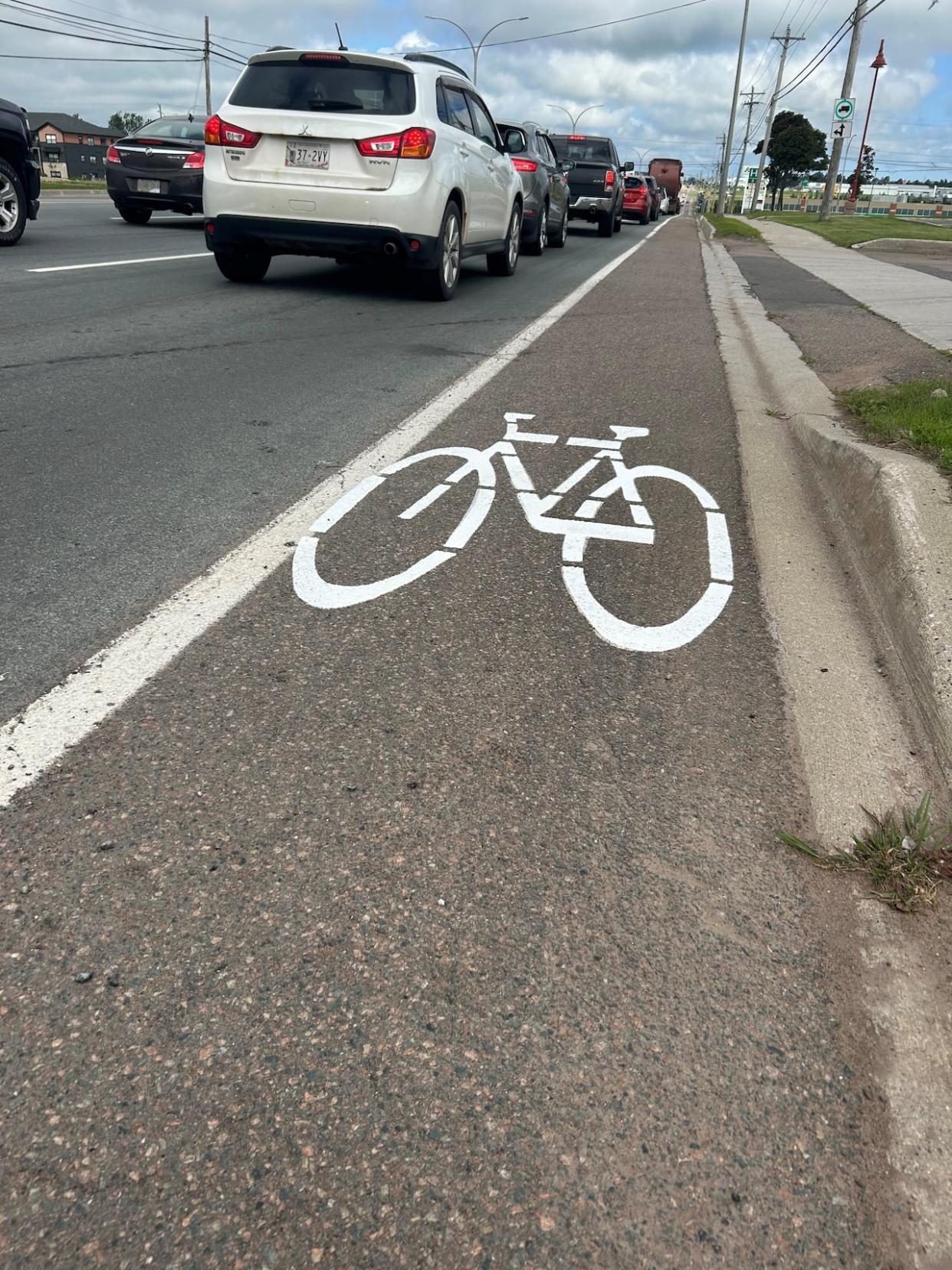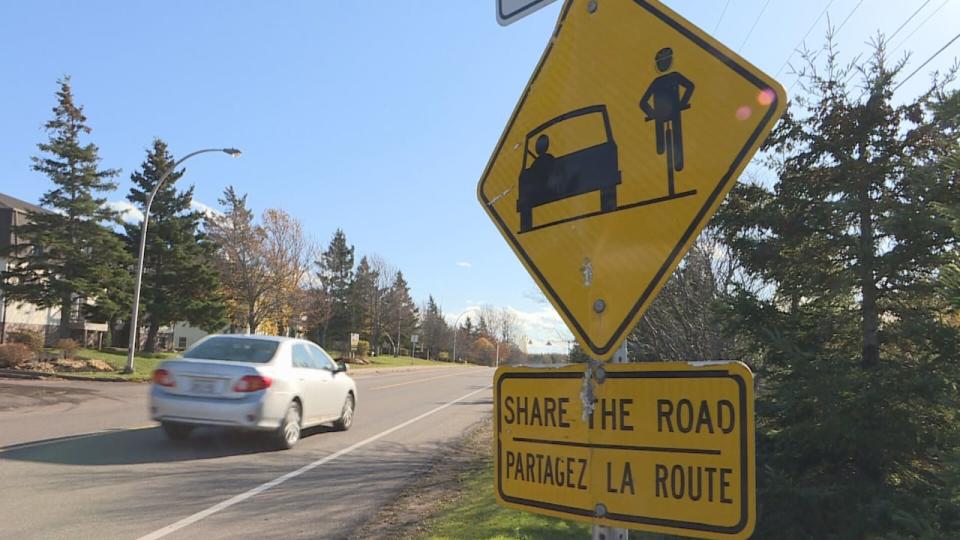'You're risking your life': Some Charlottetown bike lanes too narrow, cycling groups say

Some P.E.I. cycling groups are raising concerns about what they say are dangerously narrow bike lanes in Charlottetown.
The bike lanes on University Avenue, for example, are some of the narrowest Jordan Bober has ever seen. The executive director of Cycling P.E.I. says these lanes are not safe when both cyclists and vehicles are navigating such a busy street.
"You can't simply paint bicycle symbols on a shoulder and call it a bike lane. There's a lot of consideration that needs to go into making it safe," Bober said.
The provincial Highway Traffic Act says passing cars need to leave at least one metre of distance when passing a cyclist. But Bober said the bike lanes he's seen on the Island don't always make that possible.
Charlottetown could look to the National Association of City Transportation Officials in the U.S., Bober said, for guidelines and recommendations on how to construct safe bike lanes.
When you get past UPEI, it's a minefield of gutters, debris from the road, debris from traffic itself. — Isaac Williams
The association recommends a minimum width of about 1.8 metres (or six feet) for a conventional unidirectional bike lane.
Beyond just width, however, Bober said a busy road like University Avenue could use additional measures to keep cyclists safe, such as a painted buffer line or solid dividing structure.
Safety and congestion concerns
The city does have a plan to revamp University Avenue, which it revealed earlier this year. The plan includes adding a separate active transportation lane.
Bike Friendly Communities, a P.E.I. group that promotes active transportation infrastructure, is encouraged by the new University Avenue plan.

Isaac Williams, a member of Bike Friendly Communities, has been biking around Charlottetown for the last eight years as his primary mode of transportation. (Shane Hennessey/CBC)
"We really need to focus on the details and take this opportunity to get it right," said Isaac Williams, a member of the organization.
Williams has been biking in Charlottetown for about eight years now as his primary mode of transportation. He normally avoids University Avenue if he can.
"When you get past UPEI, it's a minefield of gutters, debris from the road, debris from traffic itself," he said.
Williams said the Confederation Trail is a great way to get around the city for cyclists and other active transport users — for now, at least. As more people get interested in active transportation, he said, the trail will get congested and cyclists will need another major artery to get around town safely.
'Major oversight in the bylaws'
Bober and Williams want Charlottetown to look to other cities, such as Halifax, to see what measures it could take to expand active transportation accessibility.
But they both said there's plenty of local knowledge in P.E.I. that the city should tap into.
It's a minefield of gutters, debris from the road, debris from traffic itself. - Isaac Williams, Bike Friendly Communities
"We definitely don't need to reinvent the wheel or think that we have to start from scratch here," said Bober. "Just utilize the resources that are available, and you can't go wrong."
Besides the structure of the lanes themselves, Bober said another major issue is vehicles parking in bike lanes. That's legal, the city told CBC News in an email.
"I think that that's clearly a major oversight in the bylaws," said Bober. "There should never be parking allowed in a bike lane."

The P.E.I. Highway Traffic Act says cars and trucks need to leave at least one metre of distance when passing a cyclist. (Brian Higgins/CBC)
The city did not address concerns around safety or the width of its bike lanes when CBC News asked this week.
But a spokesperson did say the city is recruiting a sustainable transportation officer who will look at active transportation pathway construction in Charlottetown, and will consult groups like Cycling P.E.I.
"Bike Friendly Communities has presented a number of ideas for consideration to City of Charlottetown's Mayor and Council and those ideas will be reviewed in more detail with the hiring of a dedicated AT [active transportation] staff person," the city's email stated.
The city also said it plans to complete the last section of the Perimeter Highway Active Transportation Pathway this year.
CBC News also reached out to the province for comment, but no one was made available.


